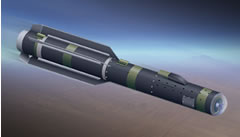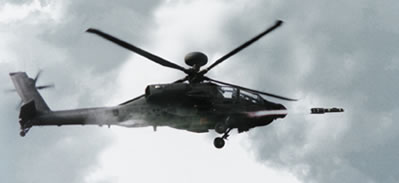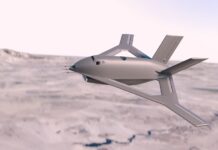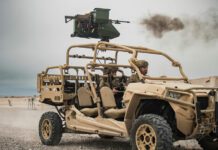The Joint Common Missile (JCM) system is the next generation air-to-ground missile designed to replace the Longbow, Hellfire, and Maverick in U.S. Armed Forces inventory. The missile will be carried by rotary- and fixed-wing platforms as well as selected ground platforms. The program’s cost is estimated at $5 billion dollars over the life of the program. Initial fielding of the JCM is expected by 2010. The JCM will offer extended engagement ranges, compared to existing missiles. When launched from high speed attack aircraft such as the F/A-18, the JCM will be able to engage targets at 28 km and up to 16 km when launched from helicopters (twice as the current Hellfire II). Every F/A-18 will be able to carry up to four JCMs per wing station (each rack will mount two missiles).
The U.S. Army, Navy and Marine Corps are expected to procure up to 54,000 JCM rounds at a total cost of $5 billion, to replace the Longbow / Hellfire missiles on the Apache, Cobra, and StrikeHawk helicopters and the Maverick missile on the F/A-18 Hornet jet fighter, The United Kingdom’s Ministry of Defence has also expressed potential interest in co-developing and producing the new missile.
 JCM will be equipped with a tri-mode seeker combining semi-active laser (SAL), passive imaging infrared (IIR) and active millimeter wave radar (MMW). SAL seekers will be employed for precision-strike, single-shot kill with optional “man in the loop” capability, where low collateral damage are required. Thermal imaging seekers are considered for passive, fire-and-forget engagements, where countermeasure resistance is required. MMW seekers will be used for engagements of dispersed, multiple targets, under adverse weather conditions. In December 2004 the tri-mode seeker was tested against small littoral targets. During 125 test-runs the JCM deployed the I2R and MMW seeker modes targeting Boghammar class FPBs which performed high speed and evasion maneuvers in calm and high sea (up to sea state 3). In previous tests, conducted in 2003 the JCM seeker was successfully demonstrated its capability to engage larger vessels.
JCM will be equipped with a tri-mode seeker combining semi-active laser (SAL), passive imaging infrared (IIR) and active millimeter wave radar (MMW). SAL seekers will be employed for precision-strike, single-shot kill with optional “man in the loop” capability, where low collateral damage are required. Thermal imaging seekers are considered for passive, fire-and-forget engagements, where countermeasure resistance is required. MMW seekers will be used for engagements of dispersed, multiple targets, under adverse weather conditions. In December 2004 the tri-mode seeker was tested against small littoral targets. During 125 test-runs the JCM deployed the I2R and MMW seeker modes targeting Boghammar class FPBs which performed high speed and evasion maneuvers in calm and high sea (up to sea state 3). In previous tests, conducted in 2003 the JCM seeker was successfully demonstrated its capability to engage larger vessels.
The multi-purpose warhead is designed by General Dynamics Ordnance & Tactical Systems (OTS). It will integrate a shaped-charge which will defeat all advanced armored threats and a blast fragmentation explosive charge, activated by a multi-mode delay fuse, built by Perkin Elmer Optoelectronics, which will penetrate the outer skin of “soft” targets and explode inside targets such as boats, vehicles, buildings and bunkers. Both capabilities are currently addressed by different warheads provided for the Hellfire II shaped charge and Blast Fragmentation warheads.
The JCM uses a single two-stage rocket motor produced by Aerojet and Roxel which provides the boost and sustain thrusts (at a ratio of 20:1) to accelerate and maintain missile’s cruising speed over a long distance and wide temperature extremes of both rotary- and fixed-wing environments. Both rocket motor and warhead are designed as an “insensitive munitions”, to prevent sympathetic explosion when subject to nearby explosions, impact by small arms or fragment or exposed to intense fire.
In December 23, 2004 the pentagon announced plans for saving of $30 billion between 2005 and 2011. Among the programs cancelled due to these cuts is the $2.4 billion funding for the JCM program. Raytheon is proposing a follow-on program – Precision Attack Air-launched Surface Missile (PAASM), utilizing multi-mode seeker technology from the PAM and some technologies developed for the JCM.













